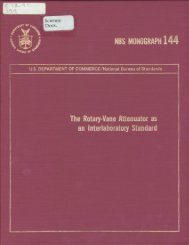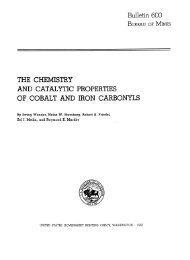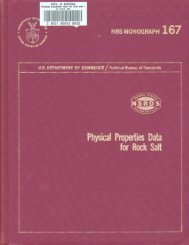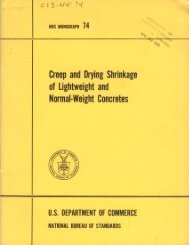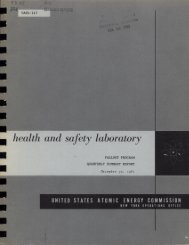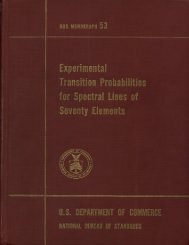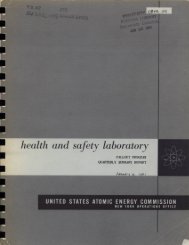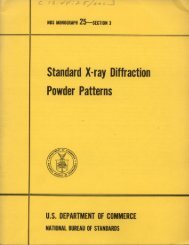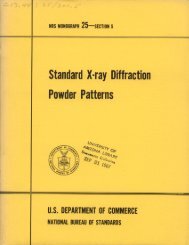MICROWAVE SPECTRAL TABLES Diatomic Molecules
MICROWAVE SPECTRAL TABLES Diatomic Molecules
MICROWAVE SPECTRAL TABLES Diatomic Molecules
You also want an ePaper? Increase the reach of your titles
YUMPU automatically turns print PDFs into web optimized ePapers that Google loves.
Microwave Spectral TablesVolume I: <strong>Diatomic</strong> <strong>Molecules</strong>Paul F. Wacker, Masataka Mizushima, Jean D. Petersen, and Joe R. BallardFor about 1500 spectral lines of diatomic molecules observedby coherent radiation techniques, measured frequencies, assignedmolecular species, assigned quantum numbers, and newly computedintensities are given. Molecular data, such as rotational constants,dipole moments, and various coupling constants, determined by suchtechniques,are also tabulated, as are other molecular constants usedin the intensity computations. References are given for all includeddata. For determination of hyper fine spectra, both Casimir's functionand the intensity splitting factor are given for both integral and halfintegralquantum numbers J and I, permitting application to additionalmolecules with unclosed electronic shells and with hyperfine splittingproduced by more than one nucleus.1. IntroductionThese tables represent the first volume of a revision of Kisliuk and Townes ' "Molecular Microwave Spectra Tables, " published as National Bureau of Standards Circular 518 [1] .The spectral lines reported are not restricted to those in a given frequency range or to thoseobserved by conventional microwave spectroscopy, but rather include those observed by anycoherent radiation technique, including molecular beam techniques. However, the lines reported have been restricted to those measured in or extrapolated to negligible external fieldsand to those applying to relatively isolated molecules and radicals. Nevertheless, molecularparameters describing field-dependent data are included, particularly for paramagnetic gasesand when given in articles reporting field-independent data.Physics Abstracts, Chemical Abstracts, Physical Review, Journal of Chemical Physics, and Reviews of Modern Physics were searched through the end of I960. All the originalsources so located plus various unpublished reports have been studied. The authors would liketo receive information regarding any errors, misinterpretations, and omissions (of data notlikely to be listed in abstract journals dated after I960), as well as reports on further unpublished work, addressed to the Radio Standards Laboratory, National Bureau of Standards,Boulder, Colorado.^fcNumbers in brackets indicate references listed on page XVII.Ill



